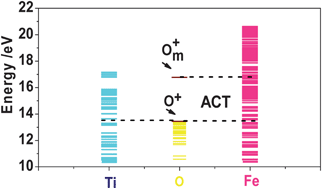In low pressure glow discharges such as the Grimm-type source, the relative intensities of lines in the analyte spectrum depend primarily on the plasma gas. The probability of selective excitation of certain analyte spectral lines by asymmetric charge transfer (ACT) involving carrier gas ions is increased if excited levels are close to resonance. Traces of light gaseous elements, present either as constituents in the sample such as oxide, hydrides, nitrides or occluded within the sample, can be involved in selective excitation or affect selective excitation by the plasma gas. Asymmetric charge transfer involving oxygen ions (O-ACT) has been observed in spectra recorded with the Imperial College high resolution vacuum UV Fourier transform spectrometer (FTS). In addition, analyte lines excited by asymmetric charge transfer with argon ions (Ar-ACT) are relatively weaker, probably due to quenching of argon ions and corresponding reduction of Ar-ACT. Recent glow discharge mass spectrometry results have shown that significant quenching of the argon ion population occurs with the progressive addition of oxygen to glow discharges. ACT by oxygen ionic metastable states is reported and discussed.

You have access to this article
 Please wait while we load your content...
Something went wrong. Try again?
Please wait while we load your content...
Something went wrong. Try again?


 Please wait while we load your content...
Please wait while we load your content...